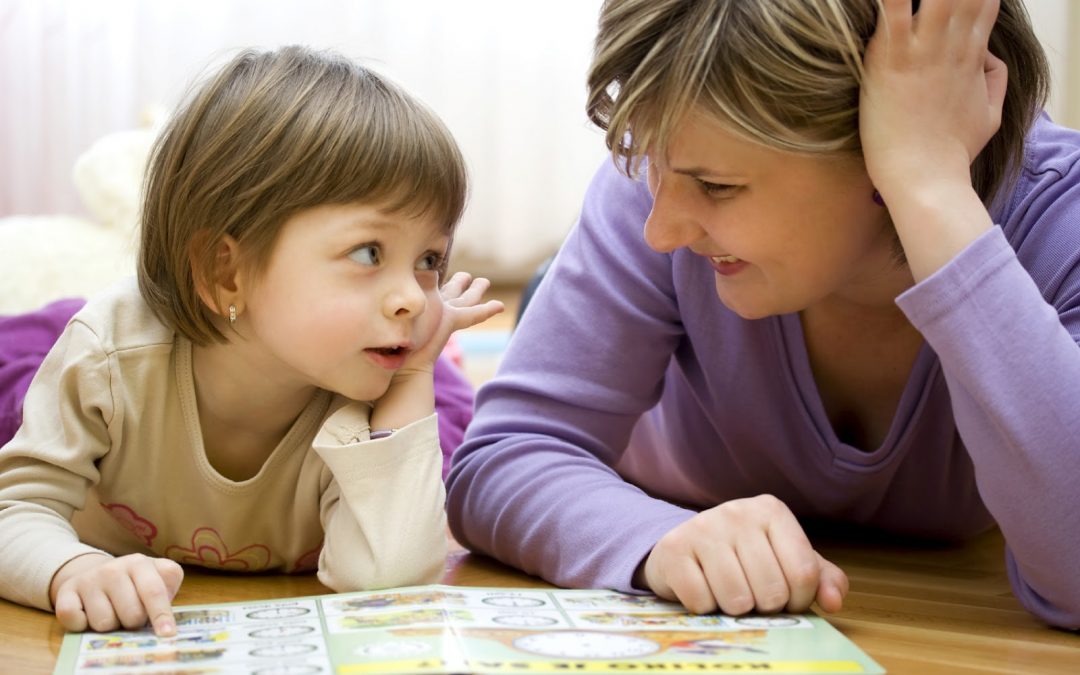
by PRIDE Reading Program Admin | Mar 20, 2018 | A PRIDE Post, PRIDE Reading Program, Reading Skills
The Kindergarten school year is coming to an end and as a parent your thoughts are probably turning towards first grade. Is your child ready for first grade reading? How do you know? Here is a list of benchmark reading accomplishments for kindergarten that was included in a report prepared by a National Academy of Sciences panel titled Preventing Reading difficulties in Young Children, Catherine E. Snow. Kindergarten Reading Benchmarks.
Your Child…
Has reached the reading benchmarks for Kindergarten if he or she:
- Knows the parts of a book and their functions.
- Begins to track print when listening to a familiar text being read or when rereading own writing.
- “Reads” familiar texts emergently, i.e., not necessarily verbatim from the print alone.
- Recognizes and can name all uppercase and lowercase letters.
- Understands that the sequence of letters in a written word represents the sequence of sounds (phonemes) in a spoken word (alphabetic principle).
- Learns many, though not all, one-to-one letter-sound correspondences.
- Recognizes some words by sight, including a few very common ones (a, the, I, my, you, is, are).
- Uses new vocabulary and grammatical constructions in own speech.
- Makes appropriate switches from oral to written language situations.
- Notices when simple sentences fail to make sense.
- Connects information and events in texts to life, and life to text experiences.
- Retells, reenacts, or dramatizes stories or parts of stories.
- Listens attentively to books teacher reads to class.
- Can name some book titles and authors.
- Demonstrates familiarity with a number of types or genres of text (e.g., storybooks, expository texts, poems, newspapers, and everyday print such as signs, notices, labels).
- Correctly answers questions about stories read aloud.
- Makes predictions based on illustrations or portions of stories.
- Demonstrates understanding that spoken words consist of a sequence of phonemes.
- Given spoken sets like “dan, dan, den,” can identify the first two as being the same and the third as different.
- Given spoken sets like “dak, pat, zen,” can identify the first two as sharing a same sound.
- Given spoken segments, can merge them into a meaningful target word.
- Given a spoken word, can produce another word that rhymes with it.
- Independently writes many uppercase and lowercase letters.
- Uses phonemic awareness and letter knowledge to spell independently (invented or creative spelling).
- Writes (unconventionally) to express own meaning.
- Builds a repertoire of some conventionally spelled words.
- Shows awareness of distinction between “kid writing” and conventional orthography.
- Writes own name (first and last) and the first names of some friends or classmates.
- Can write most letters and some words when they are dictated.
Has your child NOT reached these reading benchmarks for Kindergarten?
If you are worried that your child did not reach the reading benchmarks for Kindergarten, keep in mind that about 80% of kids learn to read and write with very little instruction. The other 20% do not learn that way. They need things to be broken down and need to be taught. This 20 percent needs early intervention. With intensive instruction, your child can get on track. If you are in need of a really great reading intervention program, please check out the PRIDE Reading Program here.
Thank you for reading my post today!
Karina Richland, M.A., is the author of the PRIDE Reading Program, a multisensory Orton-Gillingham reading, writing and comprehension curriculum that is available worldwide for parents, tutors, teachers and homeschoolers of struggling readers. Karina has an extensive background in working with students of all ages and various learning modalities. She has spent many years researching learning differences and differentiated teaching practices. You can reach her @ info@pridereadingprogram.com or visit the website at www.pridereadingprogram.com

by PRIDE Reading Program Admin | Dec 3, 2017 | A PRIDE Post, Reading Skills
Winter break is finally here! Although we all deserve a vacation from the homework load and daily obligations, we don’t want to completely let our reading and writing skills slip during this winter vacation. As a matter of fact, this is a great time to boost them a little. Here is a very family-friendly list of winter break reading activities you can try at home to keep those reading and writing skills sharp this winter.
Winter Break Reading Activities
- Read for Pleasure. You have heard about a summer reading list – well how about a winter break reading list? Now is the perfect time for your child to catch up on all those books and magazines that they didn’t have time to read during the school year. Reading for pleasure builds vocabulary, expands your child’s mind intellectually and also helps your child become a better writer. So take a trip to your local library and let your kids choose a huge stack of books for some of their winter break reading activities.
- Cook with your kids. Cooking is a great way for the family to spend fun and educational time together. Reading food labels and recipes can help your children improve their reading skills and learn the meanings of unfamiliar words.
- Write thank you letters. Encourage your child to write “thank you” letters for all of the holiday gifts they received from relatives and friends. Sit with your child and write your own notes at the same time. Writing letters is a heavy burden for children, so it might be a good idea to space the work and be supportive.
- Listen to audio books in the car while traveling. Spending time listening to books strengthens listening, concentration and imagination skills in children. It also gives them an opportunity to improve vocabulary and language skills. Take your child’s audio book along on car trips or while you are running errands for some awesome winter break reading activities.
- Go grocery shopping. Let your child carry the shopping list as you shop. They can read off the items you need. Label reading is also a great reading task for children. You can have them look up the ingredients on the labels or ask them to research which breakfast cereal has the least amount of sugar in it.
- Play board games. Here is your opportunity to expand your child’s mind while also having fun and spending time together. Games like Scrabble, Boggle and other word games are great for challenging the minds of kids. Some games require reading for clues or reading directions.
I hope that these winter reading activities work for your family. Enjoy the holidays and thank you for visiting us today!
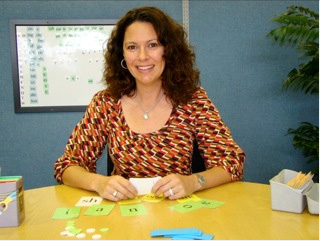
Karina Richland, M.A., is the Executive Director of PRIDE Learning Centers, LLC, an educational company that works with children in special education and focuses on reading, writing and comprehension help. She is also the author of the PRIDE Reading Program, a multisensory Orton-Gillingham reading, writing and comprehension curriculum that is available worldwide for parents, tutors, teachers and homeschoolers of struggling readers.
Karina has an extensive background in working with students of all ages and various learning modalities. She has spent many years researching learning differences and differentiated teaching practices. You can reach her at info@pridelearningcenter.com
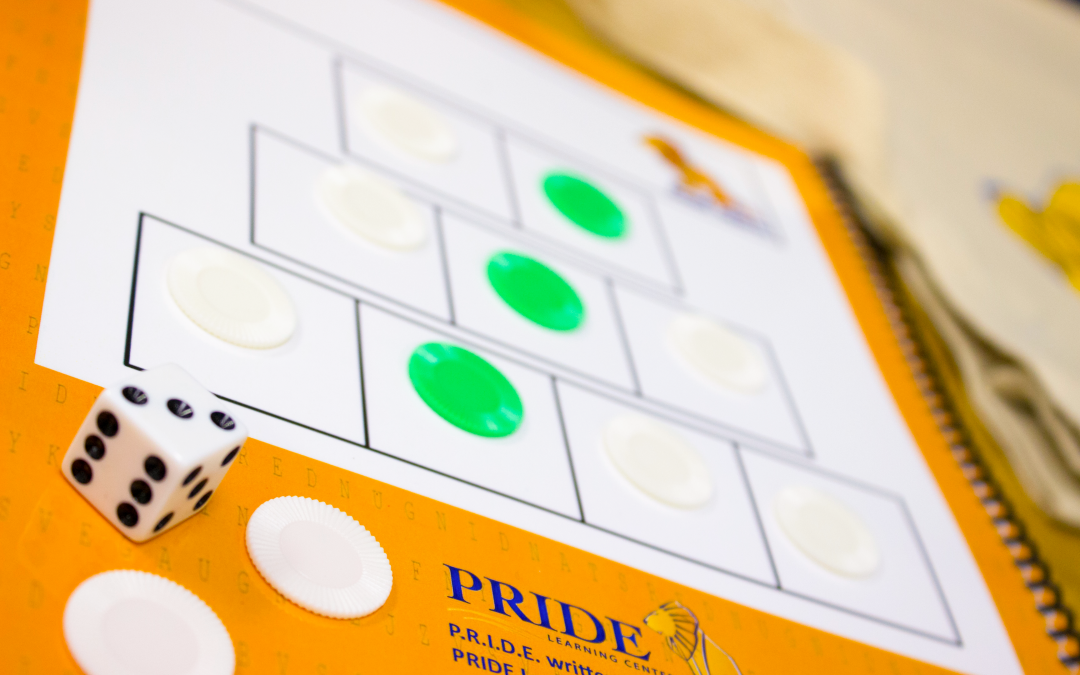
by PRIDE Reading Program Admin | Nov 6, 2017 | A PRIDE Post, Phonological Awareness, Reading Skills
To be ready to read, a child not only needs to know the letters of the alphabet but also must be aware that his or her own speech is made up of segments that differ from letters. These segments are called phonemes. I will try not to use too much teacher jargon in this blog, but this term is worth learning because it is critical to understanding reading and phonemic awareness. Without phonemic awareness, a child cannot read.
What is Phonemic Awareness
Phonemic awareness is the ability to identify and manipulate the individual speech sounds into spoken words. For example the word cat has three sounds – /c/, /ă/ and /t/. The word heat also has three sound /h/, /ē/, /t/ because the letters ea make one sound. Words can be divided into several other units such as syllables and rhymes. The smallest unit of sound in our language is a phoneme and there are forty four of them!
Phonemes do not correspond one-to-one with letters because some sounds are represented with two letters, like sh, ch, th and ng. The awareness of the separate sounds in a word is what we call phonemic awareness. It is an auditory skill that underlies the ability to use an alphabet to read and write. A child who can recognize that the word cat has three speech sounds, the word eye has one, and the word eat has two, possesses basic phonemic awareness.
If a child can change the /m/ sound at the beginning of the word mat to /r/ and know that the word is now rat, has demonstrated an even larger degree of phonemic awareness. This child can compare the sounds in words, substitute a new sound for an old one, and blend the sounds to make a new word.
Phonemic Awareness Activities
When I developed the PRIDE Reading Program, I made extra sure that every single lesson and skill the students learn also include phonemic awareness activities. A few examples of what the students have to do in the PRIDE Reading Program:
Identify rhymes – “tell me all of the words you know that rhyme with the word “heel.”
Listening for sounds – “close your eyes as I read some words to you. When you hear the “ū” sound, raise your hand.”
Manipulating sounds in words by adding, deleting or substituting – “in the word LAND, change the L to H.” (hand)
On the back cover of each of the Student’s Workbook there is a set of Elkonin Boxes to help the students build phonemic awareness. The students are instructed to listen to a word and then move the sound tokens into a box for each sound in the word.
As the students progress in the PRIDE program, they eventually break the words apart into syllables, and separate the syllables into sounds.
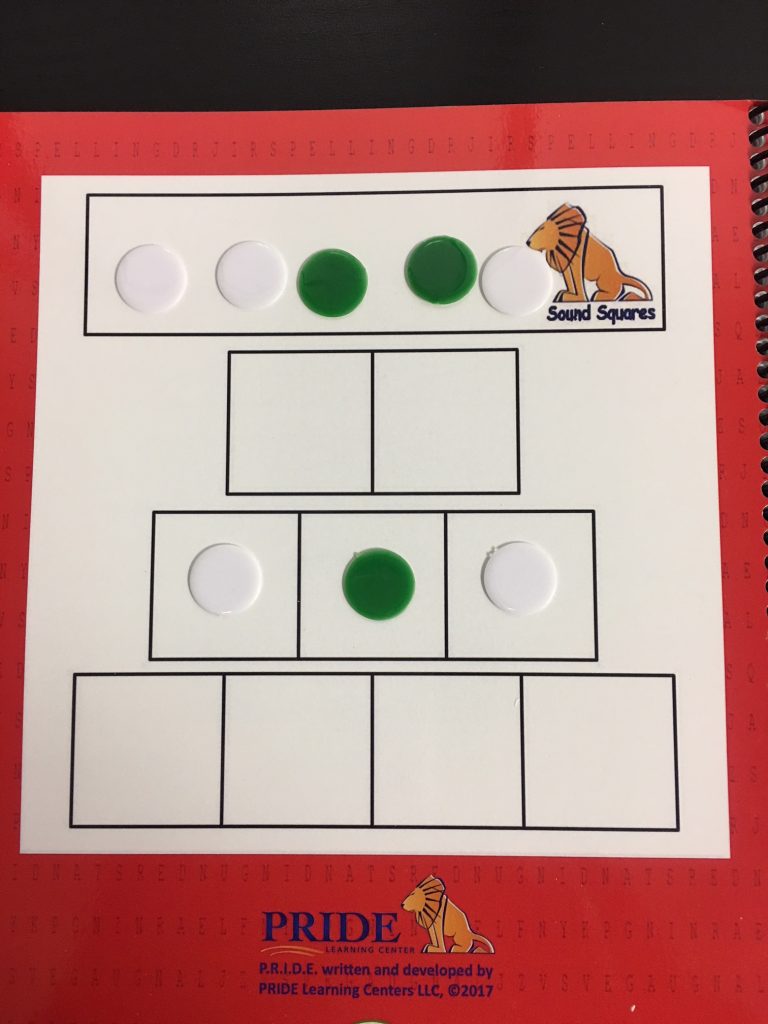
Success in reading depends on basic phonemic awareness. Without a sense of the sounds that letters represent, the child approaches reading as just memorizing letters. With phonemic awareness, the child can link letters to the sounds in words in order to decipher and spell them. Phonics is an approach to teaching reading in which the child is taught to associate letters with sounds and to use that knowledge to sound words out by blending the sounds from left to right.
It has been well known by researchers for the last 20 years that phonemic awareness and letter knowledge are the two best predictors of how well a child will learn to read during his or her first few years of school. The National Reading Panel’s report confirmed that instruction in phonemic awareness helps children learn early reading skills.
Phonemic Awareness in Action!
Here is a sample video of me teaching a student phonemic awareness with Elkonin Boxes:
Karina Richland, M.A., developed the PRIDE Reading Program, an Orton-Gillingham program for struggling readers, based on her extensive experience working with children with learning differences over the past 30 years. She has been a teacher, educational consultant and the Executive Director of PRIDE Learning Centers in Southern California. For more information, visit the PRIDE Reading Program website here. You can also reach her by email at info@pridelearningcenter.com
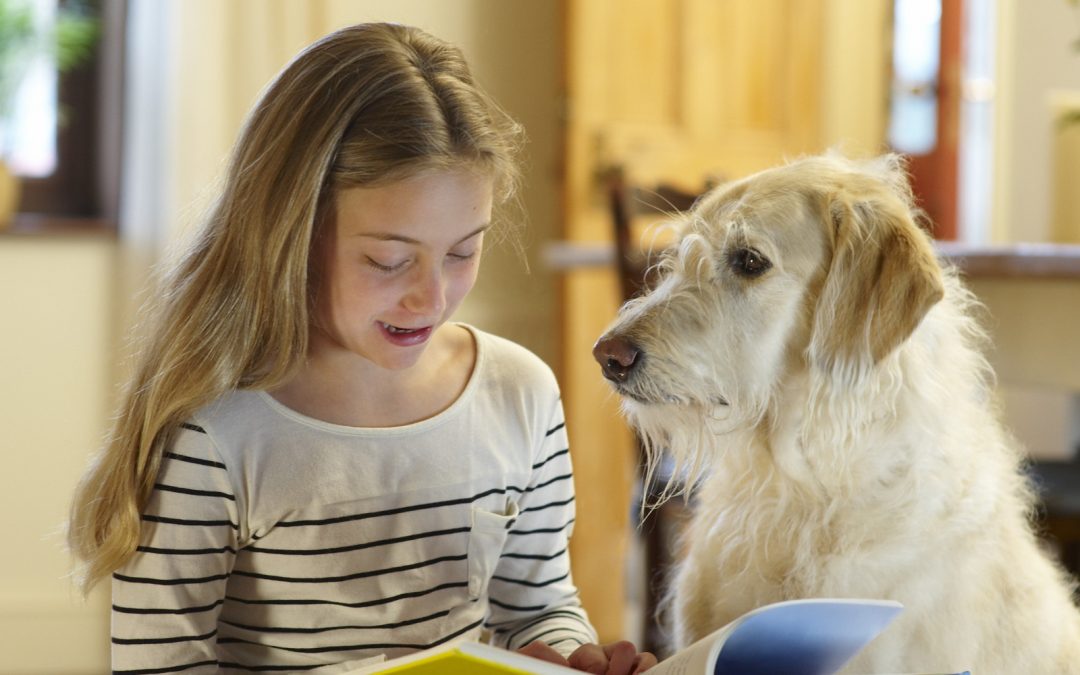
by PRIDE Reading Program Admin | Mar 27, 2017 | A PRIDE Post, Reading Skills
Any parent of a child with reading difficulties will undoubtedly be able to catalogue a whole host of approaches and methods they’ve tried over the years to encourage and develop their loved one. There are many successful methods out there, but as we know, every child is different – and sometimes a combined approach can be a good idea. If this sounds like you and your child, then perhaps you should consider investigating reading with dogs.
Paws for thought
Well known for their ability to assist those with physical disabilities, dogs are also increasingly being used for those with mental difficulties. Research has been conducted which shows that interaction with a friendly therapy dog reduces levels of stress hormones and blood pressure; and that this is more effective than interaction with a friendly human. Reading with dogs helps to create a calming and relaxing environment for the development of your child’s reading skills.
Dogs are non-judgemental, and not being able to read themselves means they do not appear superior to the child, as an adult might. Reading with dogs allows the child to dictate the pace and progress of a session, and does not react to minor mistakes of pronunciation that an adult reflexively might.
They provide unconditional support and love, which is valuable for children with self-esteem issues connected to their reading ability. The focus of the session becomes the dog, rather than the child themselves; many parents report that their child is much more motivated and excited to read because it means spending time and reading with the dog.
Moving forward
This means that your child has the opportunity to create new, positive memories associated with reading and speaking aloud, which can help to overcome previous bad experiences of embarrassment or bullying they may have encountered. A growing confidence in themselves and their abilities also shows in their overall self-worth, as well as their social skills and ability to interact with others calmly and patiently and respectfully; skills they pick up from reading with the dogs.
If this sounds like something which would benefit your child, then look into where you might be able to access a therapy reading dog locally. Reading to dogs is growing in popularity, but is still not necessarily available everywhere. In this situation, think about what the key benefits are and how you can achieve these in a different but similar setting. As long as you have an animal happy to sit quietly while the child reads, it doesn’t need to be a fully trained therapy dog: ask neighbors or friends with calm and sensible cats or dogs if you can visit with your child for a reading session.
Learn more about the New PRIDE Reading Program
________________________________________________________________________________________
Jocelyn Brown is a professional freelancer writer and mother. She loves the freedom that comes with freelancing and the versatility it allows her in covering many different topics and themes. When not at work she enjoys running, hikes in the country and making the most of family time.

by PRIDE Reading Program Admin | Nov 13, 2016 | A PRIDE Post, Reading Skills
Reading is complicated. There are 4 major stages that a child will need to go through in their lifetime to become a proficient and strong reader. This process involves word recognition, comprehension, fluency, and most importantly… motivation. The following outlines the key features of the reading process at each stage:
Stage 1 of the Reading Process: Decoding (Ages 6-7)
At this stage, beginning readers learn to decode by sounding out words. They comprehend that letters and letter combinations represent sounds and use this information to blend together simple words such as hat or dog. This is the phase where a child with dyslexia, auditory processing or a reading disability will have great difficulties. Although these children will probably be able to comprehend that individual letters represent distinct sounds, they might find it tremendously difficult to put the sounds together to spell words, and almost impossible to decode words by breaking down the component sounds.
Stage 2 of the Reading Process: Fluency (Ages 7-8)
Once students have mastered the decoding skills of reading, they begin to develop fluency and other strategies to increase meaning from print. These students are ready to read without sounding everything out. They begin to recognize whole words by their visual image and orthographic knowledge. They identify familiar patterns and achieve automaticity in word recognition and increase fluency as they practice reading recognizable texts. A child with dyslexia, auditory processing or a reading disability will often begin to fall seriously behind in this phase. These children will need to be explicitly taught and will require additional remedial instruction or tutoring in phonetic strategies.
Stage 3 or the Reading Process: Comprehension (Ages 8-14)
Students in this stage have mastered the reading process and are able to sound out unfamiliar words and read with fluency. Now the student is ready to use reading as a tool to acquire new knowledge and understanding. During this stage, vocabulary, prior knowledge, and strategic information become of utmost importance. Children will need to have the ability to understand sentences, paragraphs, and chapters as they read through text. Reading instruction during this phase includes the study of word morphology, roots, prefixes as well as a number of strategies to help reading comprehension and understanding.
Stage 4 or the Reading Process: Multiple Viewpoints (Ages 14-18)
Different from the previous stages of reading development, students are now exposed to numerous viewpoints about subjects and can analyze text as well as handle facts and concepts. When a student reaches this phase in reading, where reading involves more complex thinking and analyzing, they are ready to share and manipulate ideas. This is crucial to the last stage of reading – College level and beyond!
Karina Richland is the Founder and Director of PRIDE Learning Centers, located in Los Angeles and Orange County. Ms. Richland is a certified reading and learning disability specialist. Ms. Richland speaks frequently to parents, teachers, and professionals on learning differences, and writes for several journals and publications. You can reach her by email at karina@pridelearningcenter.com or visit the PRIDE Learning Center website at: www.pridelearningcenter.com

by PRIDE Reading Program Admin | May 22, 2016 | A PRIDE Post, Reading Skills
School is finally out and now is the time for splashing in the pool, running in the yard, playing at the park and relaxing with friends. Summer is also the time to catch up and get ahead in crucial reading skills that might be lacking during the school year. Children who read during the summer months gain reading skills, while those who do not often experience reading losses.
Trying to balance the busy, physical activities that the warm summer weather brings with quiet reading time daily is not an easy task for most parents. Some children welcome the idea of reading books and keeping up with their reading skills during the summer months, while others, particularly weak or reluctant readers, will find this a tedious chore.
Try some of these tips to make sure your child’s summer reading skills goes smoothly:
- Set aside a consistent time each day for reading. Summer camps, play dates, and technology are all fun things kids like to do during the summer. However, by the end of the day, children may be too tired to pick up a book and read. When planning summer time activities for your child, remember to leave some time in their schedules for reading. Find a convenient time each day – before bedtime or over breakfast.
- Offer an incentive program. Keep track of the minutes spent reading and then every couple of weeks the child can choose a “fun activity” as a reward. Many libraries also offer online sign ups for summer reading programs. Children can keep track of the books they read and win stickers, prizes and other incentives.
- Help your child select books at a comfortable level. If you are having trouble judging, consult your local librarian who is likely to be an expert in matching books to reading levels.
Another great source is the Lexile Framework for Reading. This website will give you a Lexile Measure from a reading test. You can then look up books according to your child’s lexile measure. The website is: www.lexile.com.
If your child makes 5 or more errors in reading a page of around 50 words – the book is too challenging.
- Become a reader yourself and lead by example! Read the news on your iPad, pick up a magazine at the doctor’s office, and take a book to the beach or on your family picnics. If kids see adults around them reading often, they will understand that reading can be a fun and important part of their summer days.
- Read about your vacation destination before you go. Have your child read about your travel spots ahead of time and help plan the trip for you. If you go camping, explore the wildlife and scenery on-line.
- Make sure to bring books on vacation, outings and errands to keep your children occupied and entertained with great stories. Pack books in your beach bag and picnic baskets instead of electronic game devices.
- Connect books with activities! Read a story that mentions something yummy to eat and then try out a recipe at home. Try some exotic foods from stories from other countries.
Karina Richland, M.A. is the Founder and Director of Pride Learning Centers, located in Los Angeles and Orange County. Ms. Richland is a certified reading and learning disability specialist. Ms. Richland speaks frequently to parents, teachers, and professionals on learning differences, and writes for several journals and publications. You can reach her by email at karina@pridelearningcenter.com or visit the Pride Learning Center website at: www.pridelearningcenter.com









